News
Su-35 vs. Su-27: Ten Most Important Ways the Russian ‘Super Flanker’ Improved on the Soviet Original
Entering service in 2014, the Su-35 air superiority fighter has been relied on increasingly heavily by the Russian Air Force to provide a high end air superiority capability, and has played significant roles in Russian war efforts in both Syria and Ukraine. Although entering service several years behind schedule, the fighter made its debut in Syria in early 2016 armed with new generations of air to air missiles to deter possible NATO attacks on its assets in the theatre in the aftermath of a Turkish shootdown of a Russian Su-24M strike fighter. The fighter has gained far more air to air kills than any other post Cold War fighter class due to its central role in the war in Ukraine, including in the war’s early weeks participating in major air battles with Ukrainian fourth generation fighter units where it gained overwhelming victories. The Su-35 is a ‘4++ generation’ fighter which is based on the design of the Su-27 Flanker air superiority fighter that entered the Soviet Air Force and Air Defence Forces 30 years prior in 2014, and improves significantly on the capabilities of the original with a wider range of design changes and new technologies. While the Su-27 was considered the world’s leading fighter in its time, delays of close to 20 years in developing a fifth generation fighter to succeed it have left the Russian Air Force very heavily reliant on the Su-35 which although not a clear world leader as the original Flanker was, is still highly competitive in many aspects of its performance. Providing an important indication of how the Russian defence sector has enhanced its top fighter design, a look at the ten most significant improvements the Su-35 benefits from over the original Su-27 are elaborated below.

Irbid-E Main Radar
Developed by the V V Tikhomirov Research Institute of Instrument Production, the Irbis-E X-waveband multi role passive phased antenna array (PAA) radar provides overwhelming advantages over the original N001 mechanically scanned array radar developed for the Su-27. Both radars are among the largest in the world ever integrated onto tactical combat aircraft, which provides significant situational awareness advantages over many fighter classes, but as an electrically scanned array radar the Su-35’s main sensor is significantly more resistant to jamming, has far greater electronic warfare applications and can scan for targets in a small fraction of the time, while also having a much reduced radar signature. One of its most notably features is its two-step electro-hydraulic drive unit which turns the antenna mechanically to 60° in azimuth and 120° in roll, while the the antenna device scans using an electronically controlled beam in azimuth and angle of elevation in sectors exceeding 60°. This allows the Su-35 to scan across a breadth of angles few other fighters can match. The Irbis-E is nevertheless less cutting edge for its time than the N001 was in the 1980s due to delays Russia faced in bringing it into service, with its receiver hardware, the master oscillator and exciter having been inherited from the older BARS radar that completed development in the 1990s. The Irbis-E is considered less capable than the advanced AESA radars fielded abroad, and had only approximately 80 percent the detection range of the Chinese AESA radar used the country’s own top Su-27 derivative the J-16.
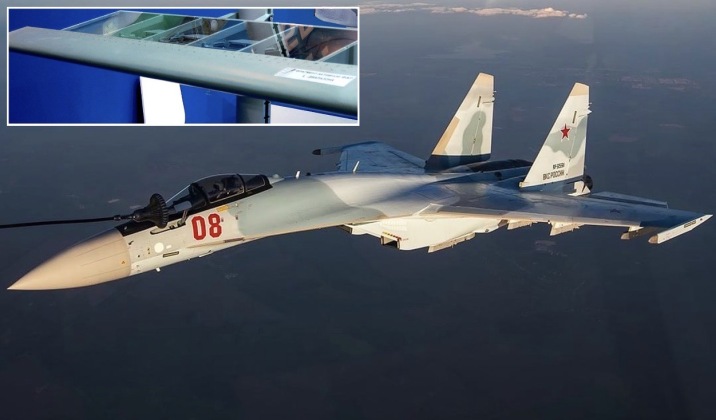
Wing Root Radars
The Su-35 is one of very few fighters in the world to use more than one radar, with its wing roots housing N036B-1-01 radars which operate at very high L-band wavelengths. Although the utility of such radars relies on sharing data within a wider unit, they are optimal for tracking stealth targets and for electronic warfare and friend or foe identification. The L-band operates in the 1.0 Ghz to 2.0 Ghz region of the radio spectrum with wavelengths of 15-30 cm, whereas most stealth fighters are optimised to evade X-band radar waves. Indeed, when the U.S. first deployed stealth fighters for high intensity combat during Operation Desert Storm in 1991 a key priority in the opening hours of the air campaign was to neutralise Iraqi long wave radars because of the threat they posed to the aircraft. Use of L-band radars reflects the Su-35’s design focus on countering enemy fifth generation stealth fighters, which the Soviet Union was initially expected to field from 2001 with the MiG 1.42 program but which Russia itself has yet to deploy at squadron level strength.
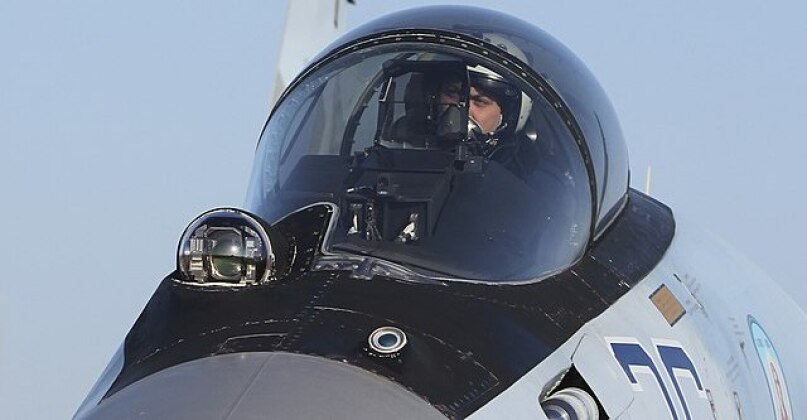
Infrared Sensors
The Su-35’s OLS-35 infra red search and tracking system (IRST) provides a detection range of 90km against enemy aircraft, which represents a significant improvement over the 50km detection range of the Su-27’s OLS-27 system. The Soviet Union pioneered the widespread use of IRSTs on its frontline fighters in the 1980s, which provide a range of benefits including the ability to maintain situational awareness without using any radars and thus operate with zero radar signature. The OLS-35 was utilised by Su-35s operating over Syria to form locks on American F-22 stealth fighters in the theatre, with these sensors well optimised to tracking stealth targets where radar systems are less capable of doing so. The OLS-35 notably integrates a laser rangefinder capable of operating against both aerial and surface targets, and can be used to designate ground targets for laser guided weapons.
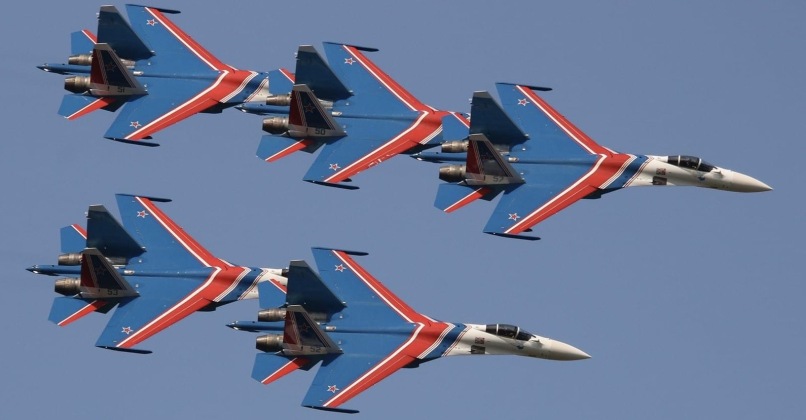
High Composite Airframe with Reduced Radar Cross Section
The Su-35’s airframe, while closely based on that of the Su-27, is significantly modified with a redesigned frontal profile resulting in a radar cross section less than one third as large as that of the original Flanker. The aircraft makes much higher use of composite materials which makes it more durable and easier to maintain while also reducing its weight to facilitate greater fuel carriage and a superior flight performance. The improved efficiency provided by expanded use of composite materials is one of most significant areas where the Su-35 improves on its predecessor, with the revolution in composite material technologies coming shortly after the Su-27 entered service which allowed Russia to produce high composite fighter airframes in the 1990s. The Su-35’s airframe nevertheless notably makes less use of composites than the rival Chinese Flanker derivatives the J-16 and J-15B, which reflects China’s stronger standing in the industry.
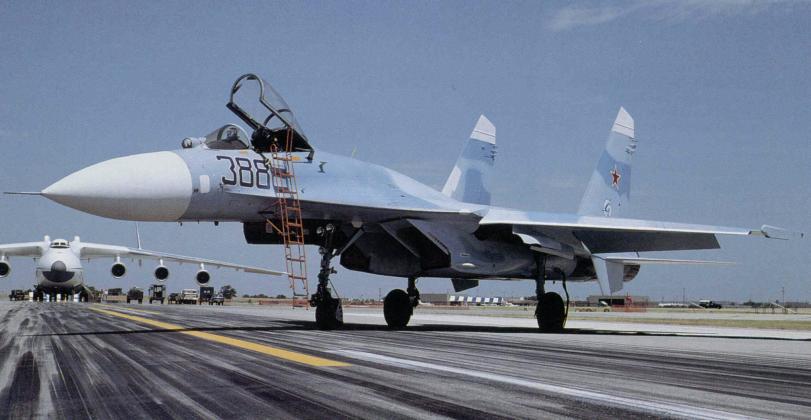
S-108 Data Links
Developed with Chinese funding for the Su-30MKK fighter, the S-108 data link provides the Su-35 with network centric warfare capabilities that are overwhelmingly superiority to those of the original Su-27. Where the Su-30MKK’s mechanically scanned radar provided only limited situational awareness, and thus could not make full utility of its data link’s potential, the Su-35’s much more powerful sensor suite allows it to share a much fuller picture of the battlefield with assets in its network including warships, ground based air defence systems and other fighter units. This is key to allowing the Su-35 to engage stealth targets at beyond visual ranges fusing sensor data from multiple radar systems in different positions and operating in different wavebands. The ability to share data with other units is one of the most significant if undermentioned combat advantages the Su-35 has over the original Flanker, and began to be introduced onto enhanced Flanker models produced from the late 1990s for export.
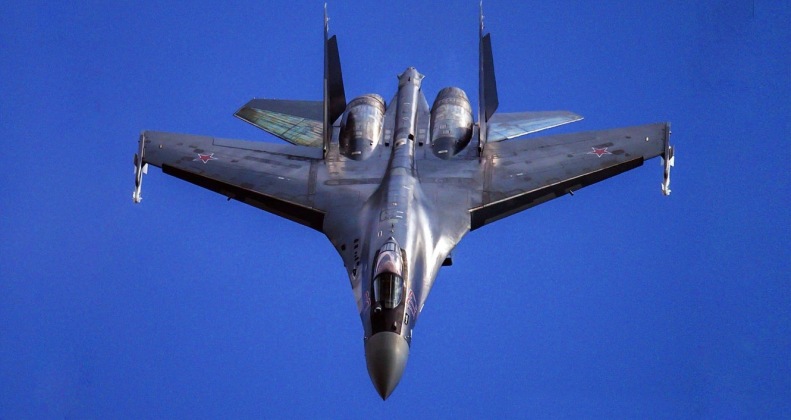
Endurance
When entering service in 1984 the Su-27 had by far the highest endurance of any fighter fielded in either the Soviet Union or in any Western air force, with the aircraft designed to be able to escort bombers for strikes on British territory from Soviet forward bases in Poland. The Su-35 improved on this considerably, with its higher composite airframe allowing for carriage of more fuel, while its AL-41F-1S engines are significantly more efficient than the original AL-31S engines powering the Su-27. The fighter’s weapons carriage is also increased to 12 air to air missiles, while a greater endurance allows the class to carry more missiles with a lower toll on its range. Improvements to endurance are also key to allowing the Su-35 to carry oversized missiles such as the R-37M used for very long ranged air to air engagements, which in the Soviet era were only carried by much larger MiG-25 and MiG-31 interceptor aircraft. The Su-35’s supercruise capabilities – its ability to fly supersonically for sustained periods without using engine afterburners – also allows it to fly fast over much longer distances than the Su-27 could.
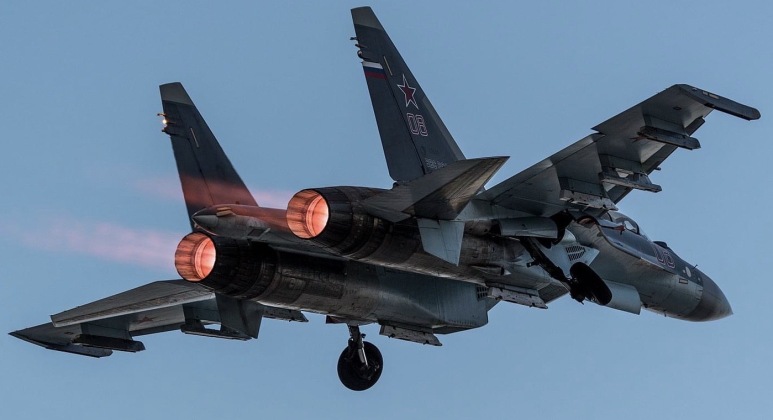
Engine Thrust and Thrust Vectoring
The AL-41F-1S afterburning turbofan engine is at the core of what has made the Su-35 a far superior fighter to the original Su-27, and is key not only to facilitating a far greater flight performance but also to powering onboard systems such as the fighter’s four sensors. The engine’s performance is among the highest in the world for pre fifth generation fighters, and its lifetime and maintenance needs are very significantly improved over the AL-31 which was already an industry leader in its time. With 142.2 kN of thrust the engine is 16 percent more powerful than its predecessor, allowing the Su-35 to maintain one of the world’s most competitive flight performances even when carrying very large weapons loads. The engine also provides three dimensional thrust vectoring capabilities which allows the Su-35 to perform very extreme low speed manoeuvres, which are useful not only for dogfighting but also for avoiding detection and breaking radar locks at longer ranges.
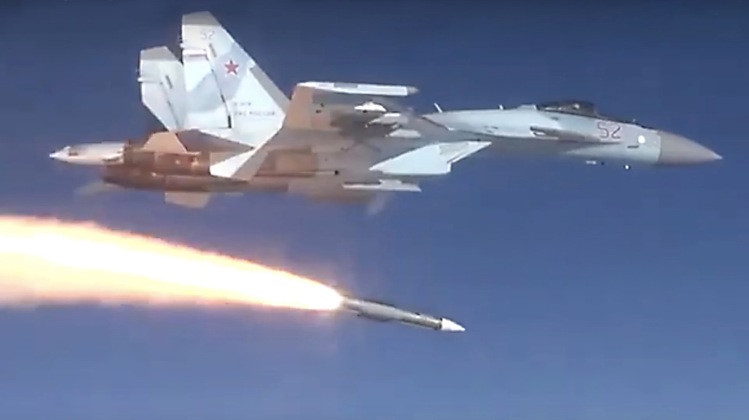
Beyond Visual Range Air to Air Missiles
Although shortages of funds mean that Su-35s have often been equipped with Soviet era R-27 air to air missiles, which were developed for the Su-27 in the 1980s as what were then the world’s leading fighter-sized air to air missiles, the Su-35 is compatible with a wider array of missile classes including several far more sophisticated designs. For beyond visual range air to air combat the Su-35’s primarily armament is the R-77-1 missile – a slightly improved variant of the R-77 which entered service in the 1990s but was produced almost exclusively for export for over 15 years due to budgetary shortages in Russia itself. The R-77 introduced active radar homing, allowing fighters to engage far more targets simultaneously while providing ‘fire and forget’ capabilities – meaning they can still engage even if the fighter that launched them breaks its radar lock. The R-77 was a world leading air to air missile in the 1990s, although the new R-77-1 variant introduced from 2014 is considered a very modest upgrade with inferior capabilities to its Chinese and American counterparts. Su-35s have also integrated R-37M missiles, which although much larger and thus carried in smaller numbers benefit from a tremendous 400km engagement range, around triple that of the R-77, as well as a high Mach 6 speed and a very large 61kg warhead. The R-37M has no near peer rivals overseas other than the Chinese PL-XX carried by the J-16 fighter. Western reports have consistently pointed to it as a major threat as demonstrated by its effectiveness over Ukrainian skies. Although the Su-35’s air to air missiles are not as cutting edge for their time as the Su-27’s were, they are still a very major improvement over those of the original Flanker.
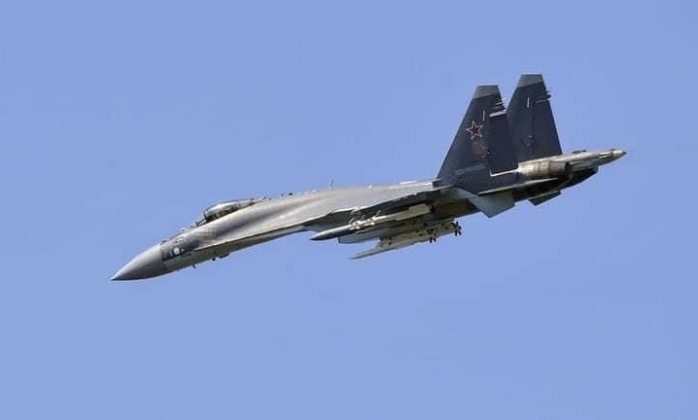
Air to Surface Weapons
The Su-27 was designed as a dedicated air superiority fighter with only a limited capability to deploy light bombs for air to ground missions, with enhanced variants such as the Su-27M having been expected to enter service in the 1990s with multirole capabilities and advanced precision guided air to surface weapons. Following on from the Su-30MKK and Su-30MKI developed in the 1990s for Chinese and Indian orders respectively, which introduced very formidable anti surface and anti shipping capabilities, the Su-35 was also designed to be compatible with both precision guided bombs as well as missiles such as the Kh-31 for anti radiation missions and the Kh-35 for anti shipping. The aircraft is also compatible with new generations of anti surface weapons such as the Kh-58 and Kh-59. These make the Su-35 a much more versatile aircraft, although the fighters are usually used primarily for air to air missions as less costly aircraft such as the Su-30SM with twin seat configurations are employed for strike roles.
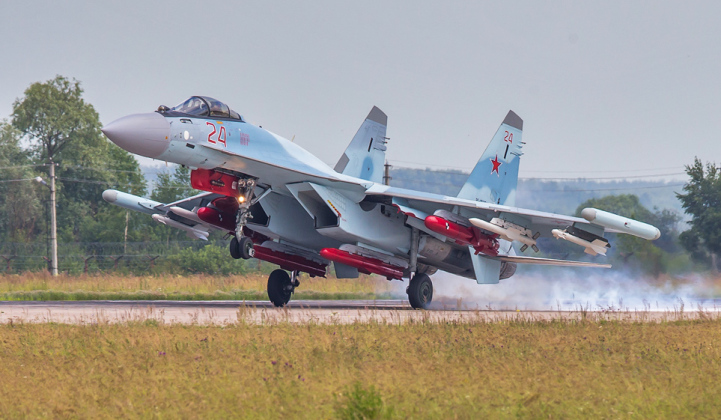
Runway and Maintenance
The Su-35’s AL-41F-1S engines allow it to operate from significantly shorter runways that not only the Su-27, but also other enhanced Flanker models, which has reportedly been a feature which particularly impressed the Chinese People’s Liberation Army Air Force when it acquired 24 of the fighters and tested them extensively. This is particularly useful since Russia has reduced its reliance on and neglected to invest in acquiring MiG-29 or MiG-35 fighters which were developed in the Soviet era to deploy from short makeshift airfields, allowing the Su-35 to instead deploy to frontline airfields with a much greater probability of being able to sustain operations than would be the case for older Su-27s. The Su-35’s maintenance requirements are also significantly lower than those of the Su-27 due to both new production methods used in its airframe, as well as due to its new engines which need considerably less time between overhauls and have lower lifetime operational costs. This makes the Su-35 a much more cost effective and practical fighter to operate, providing a strong incentive for the Russian Air Force to acquire considerable numbers to phase out its older Su-27s and MiG-29s acquired in the Soviet era.












